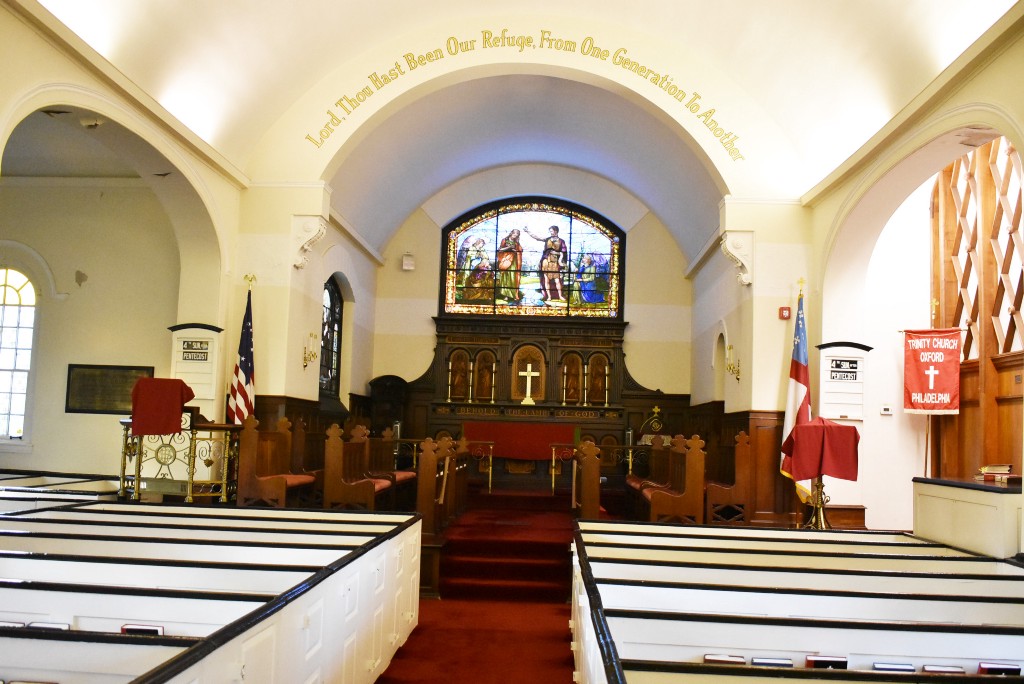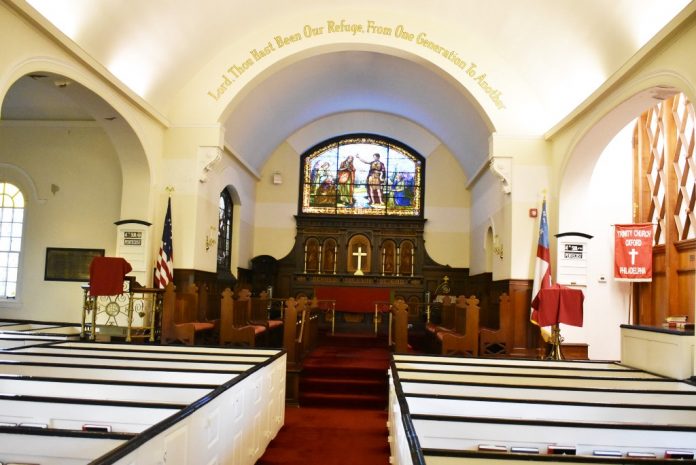Dear Trinity Oxford, let us help you fight for and preserve all five acres of your historically significant property.

By Matt Jackson
I’m writing in response to the wonderful article I read about Trinity Oxford and its amazing history.
As many may know, I am eternally fascinated by the history that surrounds this beautiful church.
My concern is the continued disparaging of its history and what has been referred to as what some have called, “the less significant history in order to save the more sacred property” and an unwillingness to fight for their beloved Parish House. I applaud Debbie Klak, Kyle Sammin and Ginny McCracken on their desire to get more recognition for the church. That is where I am in agreement, but I believe that we shouldn’t have to sacrifice what some claim is less significant history to save what is claimed to be the supposed more sacred history.
Speaking of the Parish House, nowhere in the article of June 20, 2018 did I see any mention of the recent historic designation that was granted. The silence is deafening. It’s a shame because that would indicate there is a continued desire to bring unwanted development onto their property that will only hurt their neighbors. The other indicator is the fact that the church has a hearing scheduled in the end of July to strike down the historic designation. It’s a slap in the face to their neighbors and the surrounding community — it is especially a huge slap in the face to those parishioners who are now gone who fought to prevent unwanted development across the street from their Parish House.
In 1952, church leaders and members of the congregation loudly opposed the construction of a gas station (what is now the Sunoco) across the street from the Parish House on the grounds that it would destroy the character of the church’s setting.
One of their rectors, the Rev. Noble Smith, was once quoted in a Philadelphia Inquirer feature in 1964 as saying “a number of attractive offers have been made for the ground by developers, but there is practically no chance of the historic site being given up.” He also said, “This property has been the saving grace of the neighborhood. With this space filled in by more homes, this area might have been on its way to becoming a slum.”
All of their land is truly historic. What would Noble Smith say if he were alive today? I’d love to see the church share more about Caesar Penrose and his past ownership of the land that the Parish House sits on. Also, I would love to know more about the claim that Caesar Penrose was born Caesar Morrey. There must be a fascinating story about how he obtained the Penrose name.
Recently, there was a fundraiser organized by my friends, Heather Miller and Eileen Carey, both members of the Lawndale community with the goal of raising money toward gaining listing on the federal register of historic places for their Parish House. Such a listing would open up doors for further grants and resources.
The church’s neighbors have come together to offer their assistance.
Dear Trinity Oxford, let us help you fight for and preserve all five acres of your historically significant property.
As I said earlier, I am eternally fascinated by the history of Trinity Church Oxford and have enjoyed what I have learned so far. It is worth fighting for. I call on all neighbors, historians and preservationists to unite in this cause. The more we come together, the more we will achieve. The soul of this ancient church is at stake. ••





